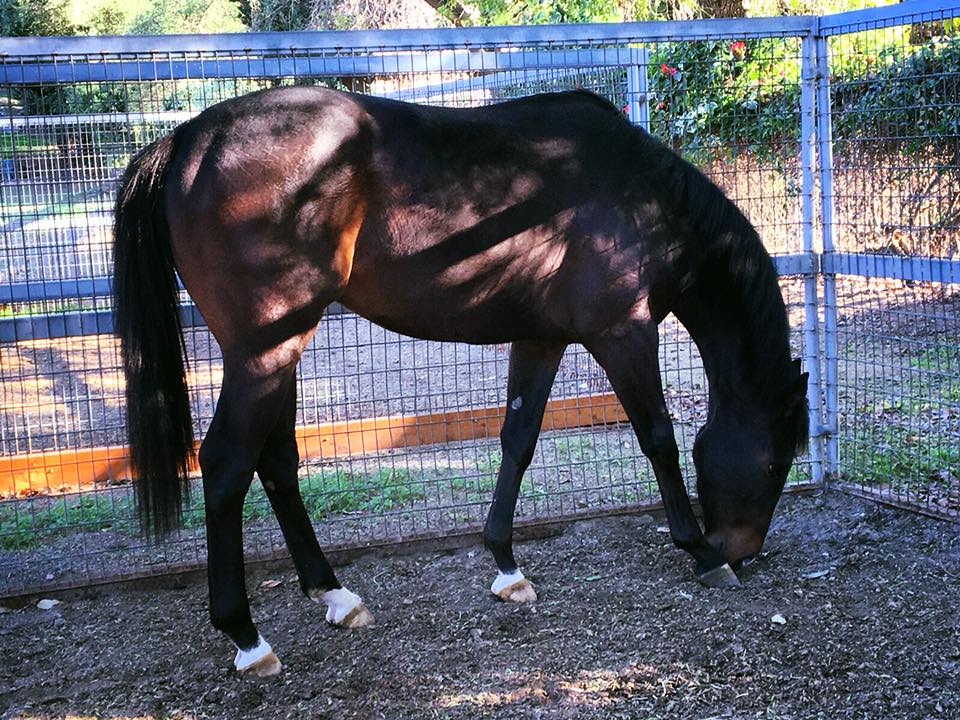Thoroughbred Aftercare Nonprofit Revolutionizing How Racing Retires its Equine Athletes

ARCADIA, Calif. February 16, 2018 – In perhaps its greatest service to both horsemen and Thoroughbreds in the California racing industry, CARMA’s Placement Program has answered one of the sport’s most important questions, “I can’t find a new home for my retired racehorse. What should I do?”
Having transitioned more than 160 Thoroughbreds from the track into second careers as equestrian mounts or a quiet pasture life, the Placement Program has become a very viable retirement method in the Golden State. Since launching in 2013, CARMA has increased the number of horses entering the program by 110 percent.
The idea for the program came when the organization felt it could do more to assist California owners and trainers with the transition of newly retired racehorses into the next phrase of their lives. With its office located at Santa Anita Park, CARMA is a tangible resource and a constant presence at one of the most recognized Thoroughbred race tracks in the country.
“It is truly an industry wide effort to change the culture surrounding the importance of Thoroughbred aftercare,” said Lucinda Mandella, CARMA’s Executive Director. “Being proactive, having a retirement plan, and knowing the options available for racehorses before they’re done competing is key. The Placement Program has become an integral part of Thoroughbred aftercare in California.”
Admitting a retiring racehorse to the Placement Program is a relatively simple process. It begins by calling Project Manager Natalie Rietkerk who then delivers a questionnaire form to the connections to gather as much information on the horse as possible. The document requires detailed information on the horse, including pertinent health records, a racing history and a temperament description. Once completed, the owner makes a $500 donation to CARMA to help cover transportation costs, which is arranged by CARMA, and the remainder to goes towards the first month of care at an affiliate facility. Before the horse is picked up from the racetrack, the owner or authorized agent must transfer temporary custody to CARMA.
“The Placement Program is a really personable experience and getting to know the horses as individuals is something we pride ourselves on,” said Rietkerk. “On average, the horses stay under our care for about six months. They are handled everyday so we get a pretty good idea of who they are and what Aftercare Partners are a good fit for them once they’re ready to graduate the program.”
CARMA works closely with several layup facilities across the state who specialize in handling recently retired race horses, including: Mojave Run, Pasadena Polo Club, Keen Ranch, Equine Body Works, Perham Ranch and Pegasus Ranch. Once the horses have completed the recommended rehabilitation time provided by a veterinarian, written reports on the animal’s temperament and suitably are sent to CARMA’s 23 Aftercare Partners who then help find the horse a new home as an equestrian mount or companion.
The Placement Program is funded by the generosity of the Stronach Group’s Aftercare Program which matches dollar-for-dollar the one third of one percent contributions made by California racing owners thorough voluntary purse deductions.
For additional information on CARMA’s Placement Program, visit https://www.carma4horses.org/carma-placement-program or call (626) 574-6654.
About California Retirement Management Account
CARMA (California Retirement Management Account) is a charitable 501 (c)(3) organization formed to assist Thoroughbred rehabilitation and retirement organizations that facilitate the care and retraining of horses who raced in California and whose racing careers have ended. CARMA ensures the racehorses have retirement options by managing and disbursing funds to qualified retirement facilities caring for such horses.
